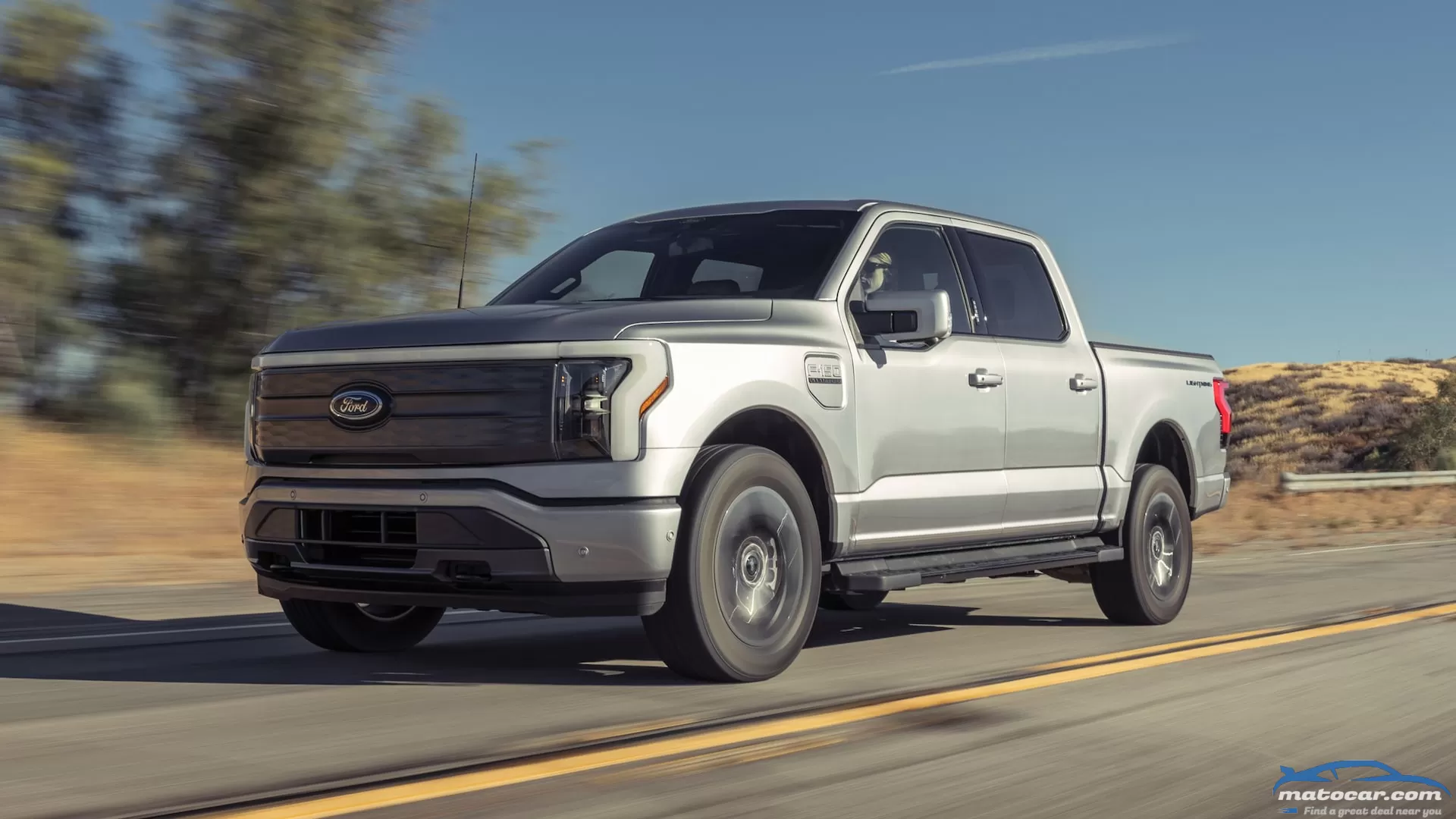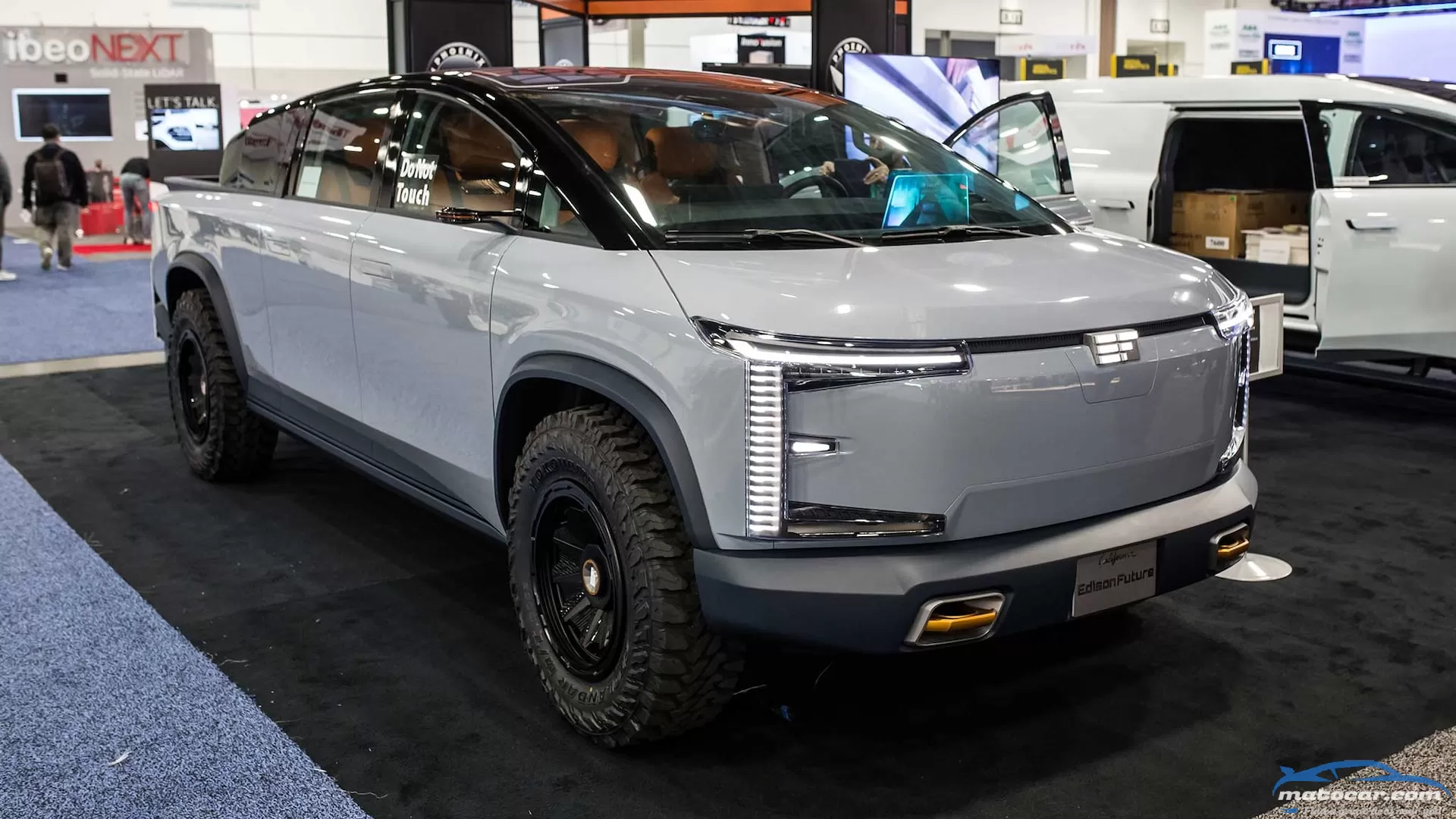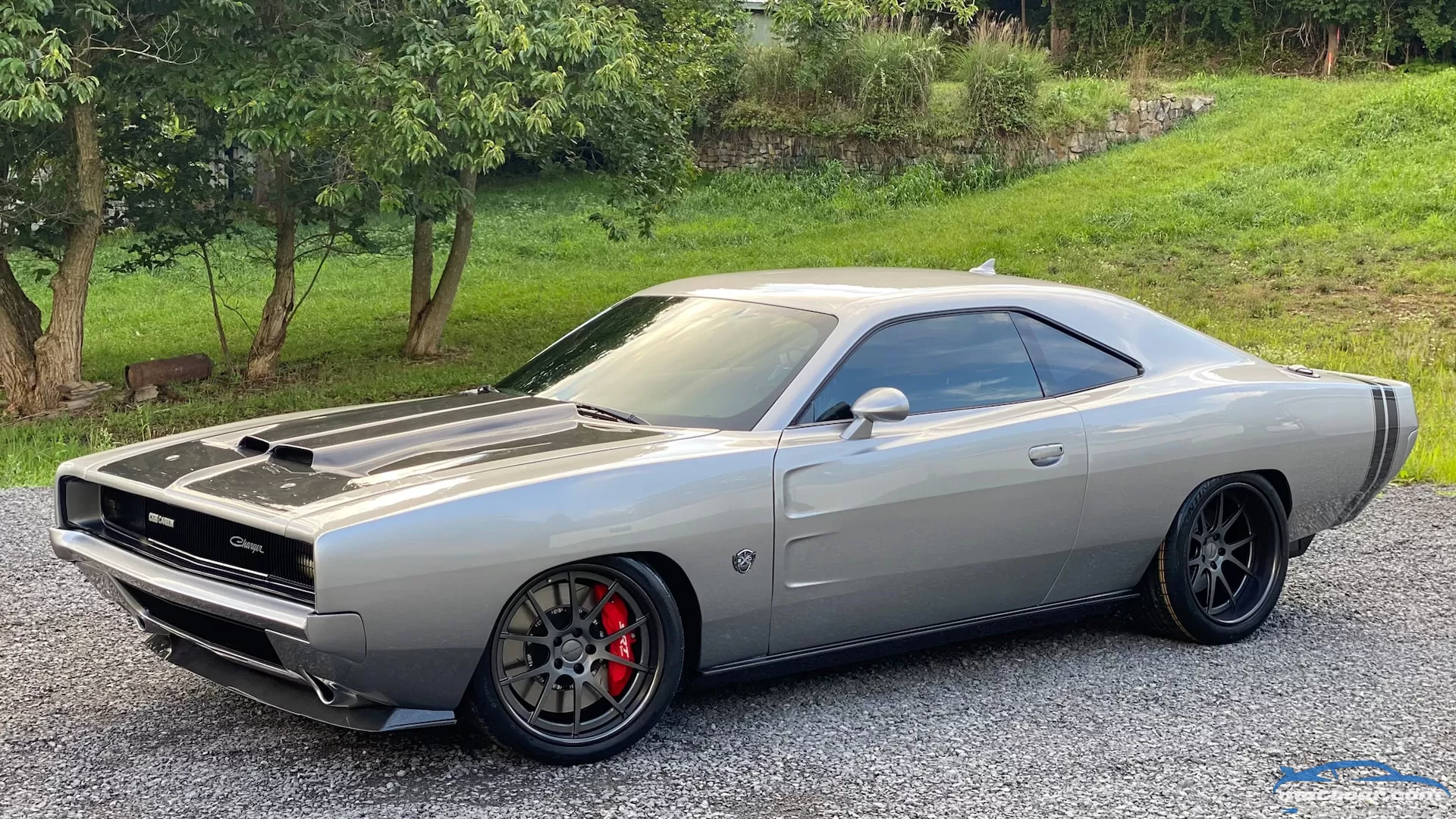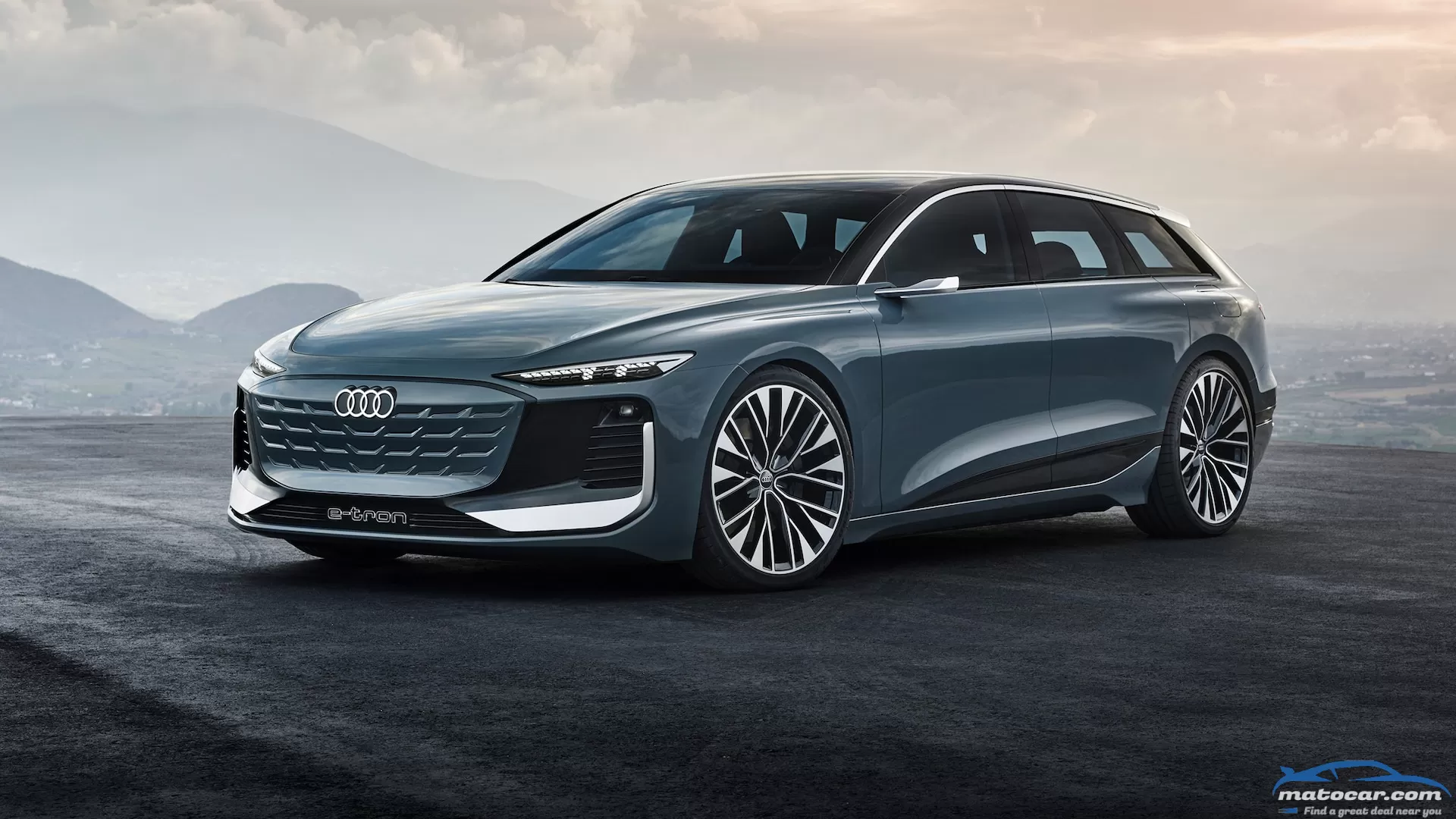2022 Ford F-150 Lightning Lariat First Test: Now, That's a Fast Truck

You no doubt keep hearing about how important the 2022 Ford F-150 Lightning electric pickup truck is to the automotive industry. The bestselling vehicle in America—one with a traditionally conservative ownership base—is taking a giant leap toward our inevitable future by electrifying. You may have also read our First Test of the range-topping 2022 F-150 Lightning Platinum and might be wondering (as we were) how a slightly more mainstream model would perform. Ford was kind enough to send the still-premium but slightly more affordable 2022 F-150 Lighting Lariat Extended Range to our Los Angeles office, and we took it to our test track to see what it could do.
Why It's Important
Like the metal it's named for, the F-150 Lightning Platinum will likely be among the rarest variants of the new electric pickup's lineup. It's also the heaviest variant, at 6,900 pounds, which makes it the most inefficient, too—netting just 300 miles of EP-rated range. The F-150 Lightning Lariat Extended Range (meaning it has the optional $10,000 130-kWh battery that comes standard on the Platinum) is bit leaner than the Platinum at 6,794 pounds, good for 320 miles of range, and more akin to the midgrade XLT Extended Range models, which are likely to make up the bulk of Ford's Lightning sales. It features dual permanent-magnet electric motors that combine for 580 hp and 775 lb-ft of torque. The motors are mounted at the front and rear axles (in fact, if you peek underneath the Lightning, you can spot the rear motor hanging out where you'd expect a differential to be on gas models) giving them all-wheel drive.
Pros: What We Like
There's a lot to like about this "lesser" Lightning. For starters, the Lariat is quicker than the loaded Platinum. The F-150 Lightning Lariat zips from 0 to 60 mph in 3.8 seconds and on through the quarter mile in 12.4 seconds at 106.9 mph, while the Platinum's bests were 4.0 seconds to 60 mph and 12.7 seconds at 105.9 mph. That makes the F-150 Lightning Lariat the quickest F-150 we've ever tested and the third-quickest pickup we've ever tested, just behind the 2022 Rivian R1T (3.1 seconds, 11.6 seconds at 110.8 mph) and 2022 GMC Hummer EV pickup (3.0 seconds, 11.7 seconds at 105.4 mph).
More than its performance, the F-150 Lightning Lariat is plain great to drive. Its powertrain is effortlessly smooth (except for occasional front-motor torque steer under hard acceleration in low-traction situations), and it has gobs of power, providing nearly endless acceleration no matter your starting speed. The Lightning handles surprisingly well, too. Despite its trucklike ride and steering feel, its low center of gravity helps it corner far better than gas F-150s. And we continue to value its huge frunk, which offers a ton of lockable storage while keeping the cabin available for four or five passengers.
Cons: What We Don't Like
As software becomes more prevalent in new vehicles, it's rapidly becoming more important in defining how we experience our cars, trucks, and SUVs. In the Ford's case there's some room for improvement there. For starters, the F-150 Lightning's peak charge rate (150 kW officially, 171 kW in our testing) is on the conservative end for a vehicle with such a massive battery pack. Effectively a measure of the maximum rate an EV can cram electrons into its battery pack while DC fast charging, the Ford's peak charge rate is slower than an R1T with a similarly sized battery pack (220 kW) and the Hummer EV, which sports 200 kWh of capacity and has a 350-kW peak charge rate. That means the Ford's electric pickup truck competitors will likely be spending less time at the fast charger while on a road trip or towing than the Lightning.
We also found the massive 15.5-inch touchscreen to be a bit laggy at times and not as thoughtfully organized as it could be. For example, changing the F-150's drive mode requires a tap on the Lightning icon in the top left corner then another tap on your preferred mode. Locking the rear differential requires you navigate back to that screen then scroll down and tap the diff button. If you find yourself regularly hitching and unhitching trailers, you'll also need to access the towing menus often to "virtually" disconnect the trailer and restore your unladen driving range to the Ford's digital instrument cluster. The Lightning can also prove fussy when adjusting settings like maximum charge percent, which must be manually toggled each time you plug in, or the truck otherwise defaults to 90 percent maximum charge.
Given Ford's embrace of software in its new "Model e" EV division, we're cautiously optimistic that the Lightning will be improved via over-the-air (OTA) updates, much in the same way its competitors are.
The Bottom Line
The Ford F-150 Lightning Lariat is a seriously compelling electric pickup truck without the fuss (or some of the finesse) of the R1T or Hummer EV pickup.
Looks good! More details?2022 Ford F-150 Lightning Lariat (Ext Range) Specifications BASE PRICE $69,269 PRICE AS TESTED $80,839 VEHICLE LAYOUT Front- and rear-motor, AWD, 5-pass, 4-door truck MOTOR TYPE Permanent-magnet electric POWER (SAE NET) 580 hp TORQUE (SAE NET) 775 lb-ft TRANSMISSIONS 1-speed automatic CURB WEIGHT (F/R DIST) 6,794 lb (50/50%) WHEELBASE 145.5 in LENGTH x WIDTH x HEIGHT 232.7 x 80.0 x 78.3 in 0-60 MPH 3.8 sec QUARTER MILE 12.4 sec @ 106.9 mph BRAKING, 60-0 MPH 133 ft LATERAL ACCELERATION 0.73 g (avg) MT FIGURE EIGHT 27.2 sec @ 0.63 g (avg) EPA CITY/HWY/COMB FUEL ECON 78/63/70 mpg-e EPA RANGE, COMB 320 miles ON SALE Now Show AllYou may also like
The dance we do as hot-rodders typically goes like this: We find a classic car, strip it down to the bare body, and then rebuild it to suit our own, often modernized vision. With a pro touring- or restomod-type build, that includes adding a high-power modern EFI engine, modern brakes (often with ABS on the nicer builds), and amenities like air conditioning and a rockin' audio system. In essence, the classic lines of the old body are kept, and the newest performance and cruising technology is grafted to it. It's time-consuming and expensive, but it gives us the look we want along with modern performance.But what if you did it the other way around? This would be where you took a modern performance car and added body panels to replicate the classic lines. This isn't a new idea, but to be honest we haven't loved the results in the past. The problem is that modern cars have modern dimensions and structures that don't always play nice with the lines of our classics. This is especially true around the windshield and A-pillars. For example, we remember a company that was trying to make a C5 Corvette look like a vintage C2 'Vette, but the windshield area just killed it since the C5's A-pillars were way too swept back for aerodynamics. It just looked wrong. We had yet to see one of these retrofied modern muscle cars done where the proportions were right, or at least close enough to still look good.That was until we spied the builds from eXoMod Creations. It was their C68 CARBON build (a clever code for 1968 Charger) and it actually looked like a vintage Dodge Charger! Now, we're not saying it's an exact copy, but it certainly captures the soul of a '68-'70 Charger that's been given a 21st-Century makeover. You get all the modern performance and tech of a new Dodge Hellcat (707 hp) or even a Hellcat Redeye (807 hp) with the vintage vibe of its '60s-era ancestor. They are also currently offering the C69 CARBON, which is reskinned in carbon fiber to look like a 1969 Charger.eXoMod Creations owes a thank you to Dodge for making this possible. You see, the C68 CARBON Charger is exactly the same length as a bone-stock 1968 Charger. It also has the exact same wheelbase! Add in that the windshield rake isn't nearly as extreme as some cars, such as Camaros and Corvettes, and you end up with proportions that are close enough to work. One area that changes, though, is the car's width, since the eXoMod C68 CARBON is a true widebody. This is done with the quarter-panels and fenders instead of the fender flares used on a modern widebody Dodge. The result of all this body-swap voodoo is a modern Dodge Hellcat that has the look of a vintage Charger, with the right proportions so that your eye doesn't dismiss it all as some sort of bait-and-switch deal.As they said in that old Ginsu knife infomercial, "But wait—there's more!" You see, the new vintage-shaped body panels aren't stamped-steel, they're carbon-fiber. This means the new retro-modern Mopar is 400 pounds lighter than a factory Hellcat Challenger! The weight loss is akin to free horsepower for an already stupid-fast car. Oh, and the body panel swap retains Dodge's powertrain warranty.The interior of the eXoMod cars stays pretty stock with the exception of better, Italian leather for the seats. All the high-tech options found on a new Hellcat are still there, so you have heated and cooled seats, launch control, and safety stuff like airbags and backup sensors.eXoMod isn't stopping with Chargers. Other classic Mopars are getting the reskinned-in-carbon treatment as well. The D71 is styled after the 1971 Dodge Demon, and we have to say the rendering looks kickass. This ride, limited to just 25 vehicles, should be done around the summer of 2023. Like all the eXoMod cars there are tons of color, wheel, and trim options.Want something wilder? How about a Hellcat reskinned to look like a 1969 Charger Daytona? Yep, big nose, big carbon-fiber wing, and tons of attitude. They are currently building this Daytona and hope to have it on display at November's MCACN event in Chicago. All the eXoMod conversions roll on high-end Forgeline wheels. Even these rollers, which look like vintage steelies, are in fact 20-inch billet Forgeline wheels!Now this isn't an inexpensive proposition, but what is these days? Consider the cost of taking a 1968 Charger and building it into everything the 2022 Hellcat is. All the comfort, all the power, all the modern suspension parts, flush-mounted glass, and latest technology. A build like that would be hundreds of thousands and take an eternity to get done. eXoMod can convert your existing Challenger (all the way back to a 2011 R/T model year) for $275K and have it built, painted, and on the road in around 8 weeks! They also sell complete cars, customized to your tastes, starting at $400K for the 707-hp Hellcat or $450K for the 807-hp Redeye!For us mere mortals, nearly half a million bucks falls into fantasy land, but you could easily spend that much, and more than likely more, adding all the Hellcat guts and carbon fiber to a vintage Mopar, and still not end up with a car capable of reliably making cross-country drives. This car drives like a new Hellcat because, in essence, it is a new Hellcat. In short, this is just another way to skin the proverbial feline; a way to get those classic-car lines we love along with the modern kickass performance we've become accustomed to. To window-shop or place an order, click on over to www.exomodcarbon.com. If you're at the 2022 SEMA show in Vegas, look for booth 24995 in the Hot Rod Alley, where a new purple car that's just being finished up will be on display.Watch! Roadkill's General Mayhem Gets UpgradedIs the '68 Dodge Charger the "best car" like David Freiburger says? Maybe, but the General Mayhem is definitely one of the most iconic Roadkill cars. Watch as Roadkill Garage hosts Freiburger and Steve Dulcich give it tons of body upgrades and engine-saving modifications before hitting the road for proper break-in procedures—aka burnouts! Sign up for a tree trial to MotorTrend+ and start watching every episode of Roadkill Garage today! Video created by Little Dot Studios.
With back-to-back electric vehicle reveals last year, including the all-electric A6 E-Tron Concept, Audi just unveiled another close-to-production EV model. Underpinned by the same platform as the upcoming A6 EV sedan, the Audi A6 Avant E-Tron Concept is a peek at the monolithic electric station wagon version with an ultra-long wheelbase. Slated to join the four-ring brand next year, the battery-powered A6 Avant E-Tron will effectively be the first electric station wagon available in the U.S.Powertrain and RangeA Quick OverviewAudi equipped this concept car with advanced exterior lighting technology designed and developed in-house. Drivers can configure the LED headlights and OLED tail lamps with various custom light signatures. High-resolution projectors built into each side of the car illuminate the ground and function as greeting lights and warning signals for approaching bicyclists.And finally, while recharging the battery, occupants can play videos games on a virtual screen projected onto the wall in XXL format via the LED headlights. (The car must be parked and, of course, facing a wall.)Design AnalysisPricing and Availability




0 Comments